Indian Society & Social Justice - 3 | Current Affairs & Hindu Analysis: Daily, Weekly & Monthly - UPSC PDF Download
| Table of contents |

|
| Ayushman Bharat Digital Mission |

|
| Global Gender Gap Report 2023: WEF |

|
| Barrier to Women's Labor Force Participation |

|
| NMC GETS WFME Recognition for 10 years |

|
| Ayushman Bhav Campaign |

|
Ayushman Bharat Digital Mission
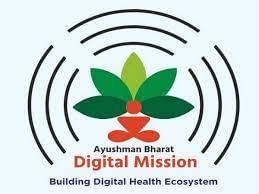
Context
Ayushman Bharat Digital Mission (ABDM) Approval: The Union Cabinet has given approval for the nationwide implementation of ABDM with a budgetary allocation of Rs 1,600 crore over five years.
- Objective of ABDM: ABDM aims to enable citizens to create Ayushman Bharat health account numbers, allowing them to link their digital health records for comprehensive healthcare coverage.
- Ayushman Bharat Scheme: Launched as a flagship scheme based on the recommendations of the National Health Policy 2017, Ayushman Bharat strives to achieve the vision of Universal Health Coverage (UHC).
What is Ayushman Bharat Digital Mission?
- It was launched in September 2021 by the Prime Minister through a video conference.
- It aims to provide digital health IDs for all Indian citizens to help hospitals, insurance firms, and citizens access health records electronically when required.
- The pilot project of the Mission had been announced by the Prime Minister from the ramparts of the Red Fort on 15th August 2020.
- The project is being implemented in the pilot phase in six States & Union Territories.
- The National Health Authority (NHA) under the Ministry of Health and Family Welfare will be the implementing Agency.
What are the Features of the Mission?
- Health ID:
- It will be issued for every citizen that will also work as their health account. This health account will contain details of every test, every disease, the doctors visited, the medicines taken and the diagnosis.
- Health ID is free of cost, voluntary. It will help in doing analysis of health data and lead to better planning, budgeting and implementation for health programs.
- Healthcare Facilities & Professionals’ Registry:
- The other major component of the programme is creating a Healthcare Professionals’ Registry (HPR) and Healthcare Facilities Registry (HFR), allowing easy electronic access to medical professionals and health infrastructure.
- The HPR will be a comprehensive repository of all healthcare professionals involved in delivering healthcare services across both modern and traditional systems of medicine.
- The HFR database will have records of all the country’s health facilities.
- Ayushman Bharat Digital Mission Sandbox:
- The Sandbox, created as a part of the mission, will act as a framework for technology and product testing that will help organisations, including private players intending to be a part of the national digital health ecosystem become a Health Information Provider or Health Information User or efficiently link with building blocks of Ayushman Bharat Digital Mission.
What are the Benefits and Related Concerns?
- Expected Benefits:
- Ease of Doing Business: ABDM aims to facilitate ease of doing business for healthcare providers, doctors, and related service providers.
- Longitudinal Health Records: Citizens can create health account numbers, linking their digital health records, thereby enabling access and exchange of longitudinal health records with their consent.
- Digital Health Ecosystem Integration: Similar to the role played by the Unified Payments Interface (UPI) in transforming payments, ABDM seeks to create integration within the digital health ecosystem.
- Improved Equitable Access: The mission is expected to enhance equitable access to quality healthcare, promoting the use of technologies like telemedicine and enabling national portability of health services.
- Concerns:
- Data Protection: The absence of a data protection bill raises concerns about potential misuse of data by private firms and malicious actors.
- Exclusion and Denied Healthcare: Faults in the system leading to the exclusion of citizens and denial of healthcare services are identified as areas of concern.
Way Forward
- The National Digital Health Mission (NDHM) still does not recognize Health as a justiciable right. There should be a push draft at making health a right, as prescribed in the draft National Health Policy, 2015.
- In addition, the failure of a similar National Health Service (NHS) in the United Kingdom must be learnt from and the technical and implementation-related deficiencies must be proactively addressed prior to launching the mission on a pan India scale.
- The standardisation of NDHM architecture across the country will need to find ways to accommodate state-specific rules. It also needs to be in sync with government schemes like Ayushman Bharat Yojana and other IT-enabled schemes like Reproductive Child Health Care and NIKSHAY etc.
Global Gender Gap Report 2023: WEF
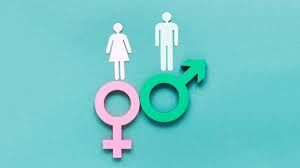
Context
The World Economic Forum (WEF) has recently published the 17th edition of the Global Gender Gap Report 2023, assessing the state of Gender Parity in 146 nations.
What are the Key Findings?
- Global Gender Gap Score:
- The global gender gap score in 2023 stands at 68.4%, indicating a modest improvement of 0.3% points compared to the previous year.
- At the current rate of progress, it would take 131 years to achieve full gender parity, showing a significant slowdown in the overall rate of change.
- Top-Ranking Countries:
- Iceland has maintained its position as the most gender-equal country for the 14th consecutive year, with a gender gap score of 91.2%.
- It is the only country to have closed over 90% of its gender gap.
- Three other Nordic countries—Norway (87.9%), Finland (86.3%), and Sweden (81.5%)—join Iceland in the top five rankings, highlighting their strong commitment to gender equality.
- Iceland has maintained its position as the most gender-equal country for the 14th consecutive year, with a gender gap score of 91.2%.
- Health and Survival:
- The gender gap in health and survival has closed by 96% globally.
- Political Empowerment:
- The political empowerment gender gap remains significant, with a closure rate of 22.1% globally and a projected timeline of 162 years to close the gap.
- Educational Attainment:
- The gender gap in educational attainment has closed by 95.2%, with significant progress made over the 2006-2023 period.
- The gender gap in educational attainment is projected to close in 16 years.
- Economic Participation and Opportunity:
- The gender gap in economic participation and opportunity stands at 60.1% globally, highlighting the persistent challenges in achieving gender equality in the workforce.
- The gender gap in economic participation and opportunity is projected to close in 169 years.
How has India Fared in the Gender Gap Report 2023?
- India has demonstrated noteworthy advancement by moving from 135th place in 2022 to 127th out of 146 countries in the 2023 edition of the Global Gender Gap Report, signifying an improvement in its ranking. The neighboring countries' rankings include Pakistan at 142, Bangladesh at 59, China at 107, Nepal at 116, Sri Lanka at 115, and Bhutan at 103.
- The country has seen a positive shift, improving by 1.4 percentage points and eight positions since the previous edition, indicating a partial recovery toward its 2020 parity level. India has successfully closed 64.3% of the overall gender gap.
- In terms of Gender Parity in Education, India has achieved parity in enrollment across all education levels, reflecting positive developments in the national education system.
- However, Economic Participation and Opportunity present a challenge for India, with only 36.7% gender parity achieved in this domain. While there's an improvement in wage and income parity, the representation of women in senior positions and technical roles has slightly declined.
- In Political Empowerment, India has made progress, achieving 25.3% parity. Women now represent 15.1% of parliamentarians, the highest representation since the inaugural report in 2006. A total of 18 countries, including Bolivia (50.4%), India (44.4%), and France (42.3%), have achieved women's representation of over 40% in Local Governance.
- Regarding Health and Survival, India has witnessed a 1.9%-point improvement in the sex ratio at birth after more than a decade of slow progress. However, India, along with Vietnam, China, and Azerbaijan, still has relatively low scores on the Health and Survival sub-index due to skewed sex ratios.
Barrier to Women's Labor Force Participation
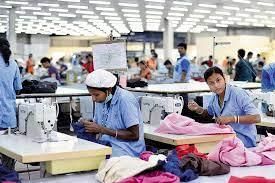
Context
The Tamil Nadu government has introduced the Kalaignar Magalir Urimai Thogai Thittam, a basic income scheme for women, acknowledging their unpaid labor. Under this initiative, eligible households will receive a monthly sum of Rs 1,000. The scheme aims to address the impact of women's unpaid care and domestic work on their participation in the labor force, particularly during marriages, where wives often shoulder the responsibilities of child-rearing and household management.
What are the Causes of Lower Women Participation in the Labour Force?
- Patriarchal Social Norms:
- Deep-rooted patriarchal norms and traditional gender roles often limit women's access to education and employment opportunities.
- Societal expectations may prioritize women's roles as caregivers and homemakers, discouraging their active participation in the labor force.
- Gender Wage Gap:
- Women in India often face wage disparities compared to men for similar work.
- According to World Inequality Report, 2022 , men in India capture 82% of labour income, while women earn just 18%.
- This wage gap can discourage women from seeking formal employment opportunities.
- Women in India often face wage disparities compared to men for similar work.
- Unpaid Care Work:
- The burden of unpaid care and domestic work falls disproportionately on women, limiting their time and energy for paid employment.
- Married women in India spend over 7 hours per day on unpaid care and domestic work, while men spend less than 3 hours.
- This trend is consistent across income levels and caste groups, leading to a significant Gender Disparity in domestic responsibilities.
- This unequal distribution of household responsibilities can be a significant barrier to women's participation in the labor force.
- The burden of unpaid care and domestic work falls disproportionately on women, limiting their time and energy for paid employment.
- Social and Cultural Stigma: In some communities, there may be stigma or resistance associated with women working outside the home, leading to lower labor force participation rates.
What are the Statistics Regarding Unpaid Care of Women?
- Female Labor Force Participation Rate (LFPR) Decline:
- Despite increased enrollment for girls in Class 10, India has witnessed a decline in the Female LFPR from 30% to 24% over the past two decades.
- Role of Domestic Work in LFPR:
- The burden of domestic work is a significant factor contributing to the lower Female LFPR, even among women with educational qualifications.
- Comparison with Other Countries:
- India's female LFPR (24%) is the lowest among BRICS countries and selected South Asian nations.
- China, with the highest female population, has the highest female LFPR at 61%.
- Impact on Women's Employment:
- Women not in the labor force spend the most time on unpaid domestic/care work, averaging 457 minutes (7.5 hours) per day.
- Employed women follow closely, spending 348 minutes (5.8 hours) per day on such chores, impacting their ability to engage in paid work.
How can Higher Women Labor Participation Impact the Society at Large?
- Economic Growth:
- Women's participation in the labor force is directly linked to economic growth. When a significant portion of the female population remains underutilized, it results in a loss of potential productivity and economic output.
- Increased women's labor force participation can contribute to higher GDP (Gross Domestic Product) and overall economic prosperity.
- Poverty Reduction:
- When women have access to income-generating opportunities, it can lift households out of poverty, leading to better living standards and improved well-being for families.
- Human Capital Development:
- Educated and economically active women can positively influence the education and health outcomes of their children, leading to intergenerational benefits.
- Gender Equality and Empowerment:
- Higher women's participation in the labor force can challenge traditional gender roles and norms, promoting gender equality.
- Economic empowerment enables women to have greater control over their lives, decision-making power, and autonomy.
- Fertility and Population Growth:
- Studies have shown that as women's labor force participation increases, fertility rates tend to decline.
- This phenomenon, known as the "fertility transition," is associated with improved access to education, healthcare, and family planning, leading to more sustainable population growth.
- Reduced Gender-Based Violence:
- Economic empowerment can enhance women's bargaining power and reduce their vulnerability to gender-based violence and abusive relationships.
- Labor Market and Talent Pool:
- Increasing women's participation in the labor force can help address skill shortages and labor market imbalances, leading to a more efficient allocation of talent and resources.
What are the Government Schemes Related to Women Empowerment?
- Beti Bachao Beti Padhao Scheme
- One Stop Centre Scheme
- SWADHAR Greh
- NARI SHAKTI PURASKAR
- Mahila police Volunteers
- Mahila Shakti Kendras (MSK)
- NIRBHAYA Fund.
Way Forward
- Gender equality discussions should move beyond compartmentalizing women's lives into work and life and recognize the comprehensive valuation of all kinds of work, both formal and informal, that women do.
- Policy solutions must be derived from women's own negotiations within their cultural context, focusing on increasing autonomy and flexible work options.
- Promoting and supporting higher women's labor force participation is not only a matter of gender equality but also a crucial driver of societal progress and development.
- By unlocking the full potential of women in the workforce, societies can reap the benefits of economic growth, poverty reduction, improved human capital, and more inclusive and equitable communities.
NMC GETS WFME Recognition for 10 years
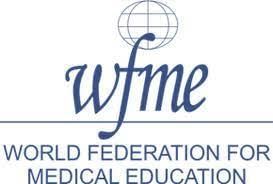
Context
The National Medical Commission (NMC), India, has been honored with the prestigious Recognition Status for a period of 10 years by the World Federation for Medical Education (WFME). This recognition underscores the commitment of NMC to upholding the highest standards in medical education and accreditation.
Key Highlights
- Global Accreditation: The WFME recognition affirms that Indian medical colleges comply with international standards, elevating the quality of medical education in India to global levels and enhancing the reputation of Indian medical institutions worldwide.
- Access to International Opportunities: Indian medical graduates can now pursue postgraduate training and medical practice in countries that require WFME recognition. This expanded access to international opportunities is particularly beneficial for those seeking to advance their careers abroad in countries like the United States, Canada, Australia, and New Zealand.
- Academic Collaborations: The accreditation facilitates academic collaborations and exchanges between Indian medical colleges and global institutions. This promotes the exchange of knowledge, research, and best practices in medical education and healthcare, fostering international cooperation and innovation.
- Quality Assurance: WFME recognition instills a culture of quality assurance and continuous improvement in Indian medical institutions. It encourages strict adherence to high standards in medical education, ensuring ongoing benefits for both students and patients.
- International Examinations: Indian students are now eligible to apply for international examinations, including the Education Commission on Foreign Medical Education and the United States Medical Licensing Examination. This enhances the mobility and career options for Indian medical graduates.
- Attraction for International Students: India's acknowledgment for globally recognized standards in medical education makes it an appealing destination for international students seeking high-quality medical training.
National Medical Commission (NMC)
- The National Medical Commission (NMC) serves as India's foremost regulatory body responsible for overseeing both medical education and practice. Its primary role involves establishing and upholding standards for medical education and practice throughout the country.
- The NMC is dedicated to ensuring that medical colleges and institutions in India strictly adhere to the highest standards in healthcare education. It plays a crucial role in regulating the curriculum, accreditation processes, and licensing of medical professionals.
- Committed to maintaining the utmost standards in healthcare education, the NMC aims to align medical education in India with global quality benchmarks, as evidenced by its recent attainment of WFME recognition.
- As the authority responsible for medical licensing and professional registration in India, the NMC oversees examinations and assessments to guarantee that only qualified and proficient individuals enter the medical field.
- Additionally, the NMC acts as a representative body for India's medical community, both nationally and internationally. It advocates for the interests of medical professionals and actively works towards the continual improvement of healthcare education in the country.
Conclusion
The recognition bestowed upon the National Medical Commission (NMC) by the World Federation for Medical Education (WFME) underscores the NMC's steadfast commitment to upholding the highest standards in medical education within India. This accomplishment not only serves to enhance the standing of Indian medical professionals and institutions but also holds significance for the global medical community. By fostering collaboration and advocating for excellence in healthcare education and practice, the NMC's achievement contributes to the broader advancements in the field of medicine on a global scale.
Ayushman Bhav Campaign
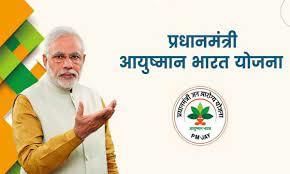
Context
The President of India has inaugurated the Ayushman Bhav campaign and the Ayushman Bhava portal, signaling a step forward in achieving Universal Health Coverage (UHC) and ensuring healthcare for all.
- The primary objective of this initiative is to extend healthcare services to the most remote areas, focusing on enhancing access and affordability for populations that are typically underserved.
- The campaign is designed not only to provide healthcare but also to create awareness about crucial health schemes and diseases, leveraging India's digital inclusion efforts to make healthcare more accessible.
- The 'Ayushman Bhav' campaign will be executed during the 'Seva Pakhwada,' reflecting a comprehensive approach involving the entire nation and society.
How Does Ayushman Bhava Transform India's Healthcare Landscape?
- Universal Health Coverage (UHC) Goal:
- The campaign adopts a collaborative, multi-ministerial approach.
- Ayushman Bhava aligns with the motto of "Sabka Saath Sabka Vikas" (Together with All, Development for All).
- This philosophy underscores inclusivity, leaving no one behind in healthcare access.
- Three Key Components of Ayushman Bhava:
- Ayushman - Apke Dwar (AAD) 3.0: AAD 3.0 will enable eligible beneficiaries to create Ayushman cards for himself/herself/any of the family members.
- This streamlines healthcare access and benefits.
- Ayushman Melas at HWCs and CHCs:
- Health Melas and Medical Camps are established weekly at Health and Wellness Centres (HWCs) and Community Health Clinics (CHCs).
- They prioritize the delivery of super-specialty healthcare services, including non-communicable disease screenings, tele-consultations, free medicines, and diagnostics.
- Ayushman Sabhas:
- Ayushman Sabha is a community-level assembly, led by the Village Health and Sanitation Committee (VHSNC) in rural areas or the Ward Committee/Municipal Advisory Committee (MAS) in urban wards.
- Its primary mission is to ensure comprehensive health coverage and optimal healthcare service delivery.
- Ayushman - Apke Dwar (AAD) 3.0: AAD 3.0 will enable eligible beneficiaries to create Ayushman cards for himself/herself/any of the family members.
- Ayushman Gram Panchayats: Gram Panchayats that successfully meet their healthcare objectives will attain the status of Ayushman Gram Panchayats.
- This encourages local participation and dedication.
What are the Recent Government Initiatives Related to Healthcare?
- National Health Mission
- Ayushman Bharat
- Pradhan Mantri Jan Arogya Yojana (AB-PMJAY)
- National Medical Commission
- PM National Dialysis Programme
- Janani Shishu Suraksha Karyakram (JSSK)
- Rashtriya Bal Swasthya Karyakram (RBSK)
|
44 videos|5271 docs|1113 tests
|














